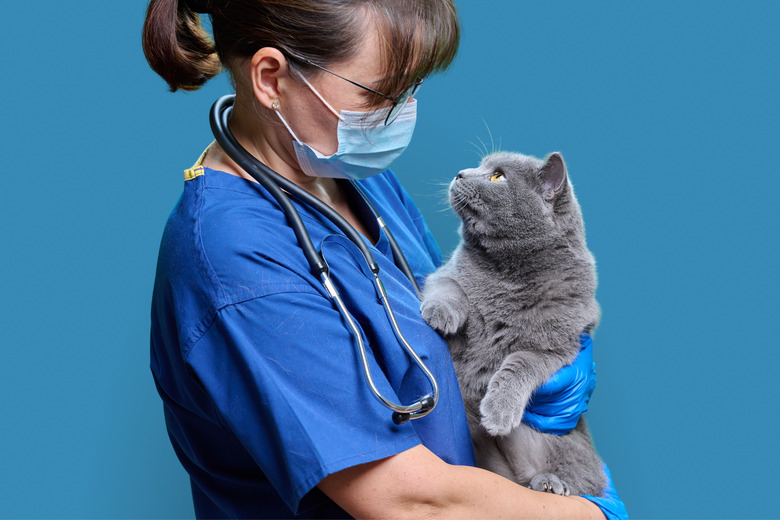Symptoms Of A Brain Tumor In Cats, Diagnosis, And Treatment
There is no single known cause of brain tumors in cats, but they are most likely to appear in older cats. Although it is never good news to discover that your cat has a brain tumor, understanding the symptoms may assist in an early diagnosis. This will give your cat the best chance for a longer life.
What are brain tumors in cats?
What are brain tumors in cats?
Brain tumors in cats are an abnormal growth of cells in the brain and are either primary tumors originating in the cells of the brain and lining or secondary tumors caused by cancer that has spread from elsewhere in the body.
Most brain tumors in cats are meningiomas, which are slow-growing primary tumors of the brain's lining and not the brain itself. These tumors affect the meninges, the system of membranes that surrounds the central nervous system. Meningioma tends to affect older cats who are at least 10 years old.
Hemangiosarcoma, mammary carcinoma, and melanoma are some of the tumors that can spread through the body, causing secondary tumors in the brain. The prognosis for these types of brain tumors is poor.
Brain tumor in cats symptoms
Brain tumor in cats symptoms
Many symptoms may indicate a brain tumor or feline cancer. You may notice just one of the symptoms, or several may be present. While symptoms generally progress in severity, they may appear suddenly in some cases, or severe symptoms may lessen for a time before returning.
Seizures are one of the most recognizable and common symptoms of a brain tumor; they typically indicate a tumor in the forebrain. Other forebrain tumor symptoms may include pacing, circling, and misjudging distances and openings, especially on one side of the body.
Depression, lethargy, and a change in appetite or thirst may also occur. Any sudden changes in behavior in an adult cat 5 years of age or older could indicate a brain tumor. Nosebleeds, nasal discharge, facial swelling, and sneezing can be caused by nasal tumors, which can also grow into the brain.
If your cat has any brain tumor symptoms, it is essential to seek veterinary advice.
Brain stem and cerebellum tumor symptoms
Tumors in the brain stem often cause vestibular symptoms, such as loss of balance, head tilt, falling or circling, eye flicking, abnormal position of the eye, vocal changes, and difficulty swallowing. These types of tumors are especially dangerous, as the brain stem is responsible for many involuntary bodily functions, such as respiration. Tumors can progress to cause coma and death.
Tumors affecting the cerebellum affect your cat's posture and balance. Your cat may display balance issues by standing with their feet set wide and swaying. They may develop a spastic, high-stepping gait. Increased muscle tone and overly pronounced reflexes can occur. You may also see head tremors, noticeable most often at the beginning of a movement, which is why they are called intention tremors.
Causes of brain tumors in cats
Causes of brain tumors in cats
Veterinary medicine is still uncertain about the risk factors and causes for brain tumors in cats, but there are believed to be some contributory factors. These include:
- Diet
- Genetics
- Exposure to toxins
- Environmental factors
- Immune system responses
- Medication
Diagnosing brain tumor in cats
Diagnosing brain tumor in cats
If your cat is showing symptoms of a brain tumor or behaving abnormally, take them to the veterinarian. Your veterinarian will determine which additional diagnostic tests are required to confirm a diagnosis based on the physical examination results and clinical signs. Bloodwork will be requested. Further tests may include X-rays or an abdominal ultrasound if cancer is suspected in other parts of the body or to rule out other conditions. Advanced imaging, such as an MRI or CT scan, will be necessary to locate the tumor in the brain.
If your veterinarian finds evidence of cancer in other parts of the body, they may wish to conduct a biopsy. This procedure takes a sample of the mass to confirm the diagnosis and determine the type of cancer and whether the tumor is benign or malignant. Metastasis of intracranial meningioma is rare, and the tumors are normally benign. Note that benign doesn't mean that they won't cause symptoms and problems in your cat, but they won't spread to other parts of the body.
Treating a cat's brain tumor
Treating a cat's brain tumor
Surgery to remove the tumor is the most common treatment for meningioma if it is in a location the surgeon can reach. However, some tumors cannot be surgically removed because of their location. Brain surgery is risky, as any brain tissue damaged or removed with the tumor may cause continued symptoms and decreased quality of life for your cat. Your veterinarian may refer you to a veterinary oncologist to discuss the best treatment options for your cat.
Radiation and chemotherapy treatments may be considered to treat a cat with a brain tumor. Radiation therapy is more targeted for brain tumors but can also damage healthy tissue. Cats tend to have greater success with surgical removal.
You may opt for palliative care depending on the tumor size and location and your cat's health, prognosis, and expected survival time. This option does not treat the brain tumor but focuses on keeping the cat comfortable during the final part of their life.
The bottom line
The bottom line
Brain tumors in cats cause various symptoms that can quickly impact a cat's quality of life. Primary brain tumors may be benign, and in some cases, they can be surgically removed by a DVM. Secondary brain tumors have come from other parts of the body, and these tumors have a poor prognosis. Knowing the symptoms of a cat brain tumor, such as seizures and behavior changes, will allow your cat to receive a diagnosis and treatment as early as possible.



